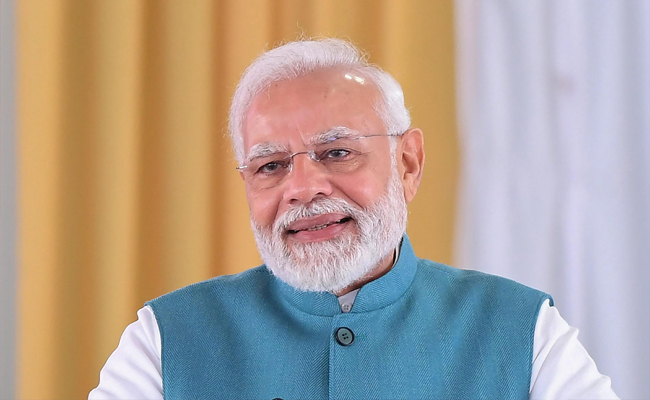Birmingham (The Conversation): Most people will have heard the term "man flu", which refers to men's perceived tendency to exaggerate the severity of a cold or a similar minor ailment.
What most people may not know is that, generally speaking, women mount stronger immune responses to infections than men.
Men are more susceptible to infections from, for example, HIV, hepatitis B, and Plasmodium falciparum (the parasite responsible for malaria).
They can also have more severe symptoms, with evidence showing they're more likely to be admitted to hospital when infected with hepatitis B, tuberculosis, and Campylobacter jejuni (a bacteria that causes gastroenteritis), among others.
While this may be positive for women in some respects, it also means women are at greater risk of developing chronic diseases driven by the immune system, known as immune-mediated inflammatory diseases.
Here we will explore how biological factors influence immune differences between the sexes and how this affects women's health.
While we acknowledge that both sex and gender may affect immune responses, this article will focus on biological sex rather than gender.
Battle of the sexes
There are differences between the sexes at every stage of the immune response, from the number of immune cells, to their degree of activation (how ready they are to respond to a challenge), and beyond.
However, the story is more complicated than that. Our immune system evolves throughout our lives, learning from past experiences, but also responding to the physiological challenges of getting older.
As a result, sex differences in the immune system can be seen from birth through puberty into adulthood and old age.
Why do these differences occur? The first part of answering this question involves the X chromosome. Females have two X chromosomes, while males have one X and one Y chromosome. The X chromosome contains the largest number of immune-related genes.
The X chromosome also has around 118 genes from a gene family that are able to stop the expression of other genes, or change how proteins are made, including those required for immunity.
These gene-protein regulators are known as microRNA, and there are only two microRNA genes on the Y chromosome.
The X chromosome has more genes overall (around 900) than the Y chromosome (around 55), so female cells have evolved to switch off one of their X chromosomes. This is not like turning off a light switch, but more like using a dimmer.
Around 15-25 per cent of genes on the silenced X chromosome are expressed at any given moment in any given cell.
This means female cells can often express more immune-related genes and gene-protein regulators than males. This generally means a faster clearance of pathogens in females than males.
Second, men and women have varying levels of different sex hormones.
Progesterone and testosterone are broadly considered to limit immune responses.
While both hormones are produced by males and females, progesterone is found at higher concentrations in non-menopausal women than men, and testosterone is much higher in men than women.
The role of oestrogen, one of the main female sex hormones, is more complicated. Although generally oestrogen enhances immune responses, its levels vary during the menstrual cycle, are high in pregnancy and low after menopause.
Due in part to these genetic and hormonal factors, pregnancy and the years following are associated with heightened immune responses to external challenges such as infection.
This has been regarded as an evolutionary feature, protecting women and their unborn children during pregnancy and enhancing the mother's survival throughout the child-rearing years, ultimately ensuring the survival of the population.
We also see this pattern in other species including insects, lizards, birds and mammals.
What does this all mean?
With women's heightened immune responses to infections comes an increased risk of certain diseases and prolonged immune responses after infections.
An estimated 75-80 per cent of all immune-mediated inflammatory diseases occur in females.
Diseases more common in women include multiple sclerosis, rheumatoid arthritis, lupus, Sjogren's syndrome, and thyroid disorders such as Graves disease.
In these diseases, the immune system is continuously fighting against what it sees as a foreign agent.
However, often this perceived threat is not a foreign agent, but cells or tissues from the host. This leads to tissue damage, pain and immobility.
Women are also prone to chronic inflammation following infection.
For example, after infections with Epstein Barr virus or Lyme disease, they may go on to develop chronic fatigue syndrome, another condition that affects more women than men.
This is one possible explanation for the heightened risk among pre-menopausal women of developing long COVID following infection with SARS-CoV-2, the virus that causes COVID.
Research has also revealed the presence of auto-antibodies (antibodies that attack the host) in patients with long COVID, suggesting it might be an autoimmune disease.
As women are more susceptible to autoimmune conditions, this could potentially explain the sex bias seen.
However, the exact causes of long COVID, and the reason women may be at greater risk, are yet to be defined.
This paints a bleak picture, but it's not all bad news. Women typically mount better vaccine responses to several common infections (for example, influenza, measles, mumps, rubella, hepatitis A and B), producing higher antibody levels than men.
One study showed that women vaccinated with half a dose of flu vaccine produced the same amount of antibodies compared to men vaccinated with a full dose.
However, these responses decline as women age, and particularly after menopause.
All of this shows it's vital to consider sex when designing studies examining the immune system and treating patients with immune-related diseases.
Let the Truth be known. If you read VB and like VB, please be a VB Supporter and Help us deliver the Truth to one and all.
Jaisalmer (PTI): Pushing for a "unified judicial policy", Chief Justice of India Surya Kant on Saturday said technology can help align standards and practices across courts, creating a "seamless experience" for citizens, regardless of their location.
He said high courts -- due to the federal structure -- have had their own practices and technological capacities, and "regional barriers" can be broken down with technology to create a more unified judicial ecosystem.
Delivering the keynote address at the West Zone Regional Conference in Jaisalmer, Kant proposed the idea of a "national judicial ecosystem" and called for an overhaul of India's judicial system with the integration of technology.
"Today, as technology reduces geographical barriers and enables convergence, it invites us to think of justice not as regional systems operating in parallel, but as one national ecosystem with shared standards, seamless interfaces, and coordinated goals," he said.
He emphasised how the role of technology in the judiciary has evolved over time.
"Technology is no longer merely an administrative convenience. It has evolved into a constitutional instrument that strengthens equality before the law, expands access to justice, and enhances institutional efficiency," he said, highlighting how digital tools can bridge gaps in the judicial system.
Kant pointed out that technology enables the judiciary to overcome the limitations of physical distance and bureaucratic hurdles.
"It allows the judiciary to transcend physical barriers and bureaucratic rigidities to deliver outcomes that are timely, transparent and principled," he said, adding that the effective use of technology can modernise the delivery of justice and make it more accessible to citizens across the country.
The CJI called for implementing a "unified judicial policy".
He said India's judicial system has long been shaped by its federal structure, and different high courts have their own practices and technological capacities.
"India's vast diversity has led to different high courts evolving their own practices, administrative priorities and technological capacities. This variation, though natural in a federal democracy, has resulted in uneven experiences for litigants across the country," he said.
Kant underscored that predictability is crucial for building trust in the judicial system.
"A core expectation citizens place upon the courts is predictability," he said, adding that citizens should not only expect fair treatment but also consistency in how cases are handled across the country.
He pointed to the potential of technology in improving predictability.
"Technology enables us to track systemic delays and make problems visible rather than concealed," he said.
By identifying areas where delays occur, such as in bail matters or cases involving certain types of disputes, courts can take targeted action to address these issues and improve efficiency, Kant said.
The CJI explained that data-driven tools could identify the reasons behind delays or bottlenecks, allowing for faster, more focused solutions.
"Technology enables prioritisation by flagging sensitive case categories, monitoring pendency in real time and ensuring transparent listing protocols," he said.
Justice Surya Kant also discussed the importance of prioritising urgent cases where delays could result in significant harm. He highlighted his recent administrative order that ensures urgent cases, such as bail petitions or habeas corpus cases, are listed within two days of curing defects.
"Where delay causes deep harm, the system must respond with urgency," he stated, explaining that technology can help courts identify and expedite such cases.
Kant also raised the issue of the clarity of judicial decisions.
He noted that many litigants, despite winning cases, often struggle to understand the terms of their judgment due to complex legal language.
"Although the orders had gone in their favour, they remained unsure of what relief they had actually secured because the language was too technical, vague or evasive to understand," he said.
He advocated for more uniformity in how judgments are written.
"A unified judicial approach must therefore extend to how we communicate outcomes," he said.
The CJI also discussed the role of AI and digital tools in improving case management. He pointed to the potential of AI-based research assistants and digital case management systems to streamline judicial processes.
"Emerging technological tools are now capable of performing once-unthinkable functions. They can highlight missing precedent references, cluster similar legal questions, and simplify factual narration," he said, explaining how these technologies can help judges make more consistent decisions.
He also highlighted tools like the National Judicial Data Grid and e-courts, which are already helping to standardise processes like case filings and tracking.
Kant reiterated that the integration of technology into the judicial process is not just about improving efficiency but about upholding the integrity of the system and strengthening public trust.
"The measure of innovation is not the complexity of the software we deploy, but the simplicity with which a citizen understands the outcome of their case and believes that justice has been served," he said.





